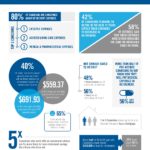Special to the Financial Independence Hub
Financial Independence (aka “Findependence”) is something that many of us are working towards, but which very few actually achieve. Having a high-paying job alone does not guarantee financial independence. While making more money does make Findependence easier to achieve, the important thing to focus on is what you do with your money, rather than how much you earn.
It’s also important to understand that financial independence will take time and planning. With the right goals and steps in place, Findependence can be achieved, but it’s important to be persistent and patient.
In most cases, financial independence doesn’t mean you won’t work ever again, but it brings freedom so you can enjoy your life and work on the things that matter to you. Here are seven key steps to develop financial independence.
1.) Get to know your money
Before you can begin to work on your financial independence, it’s imperative that you know exactly what your money is doing. You must know how much is coming in, and how much and where you are spending it.
Develop a habit of checking your bank account. Ignoring it is one of the fastest ways to lose track and lose money. It might seem obvious, but developing financial independence means spending less than you earn.
Spend a few weeks or months tracking your finances and create a budget. It’s important that it’s realistic so you can stick to it.
2.) Remove non-essentials
Once you understand your finances, it’s time to find the areas where you can save more. This is one of the hardest parts on the journey to financial independence, but also one of the most important steps.
Look at your spending and assess what you don’t need. In other words, you should try to minimize your non-essential expenses. That might mean cancelling your gym membership, reducing the amount of streaming services you pay for or making more meals at home. While these things might seem small, they will all add up, and after a few months it might make a noticeable difference to your bank account.
3.) Increase your income
Now that you understand your finances and have your spending under control, it’s time to start saving more. Continue Reading…






